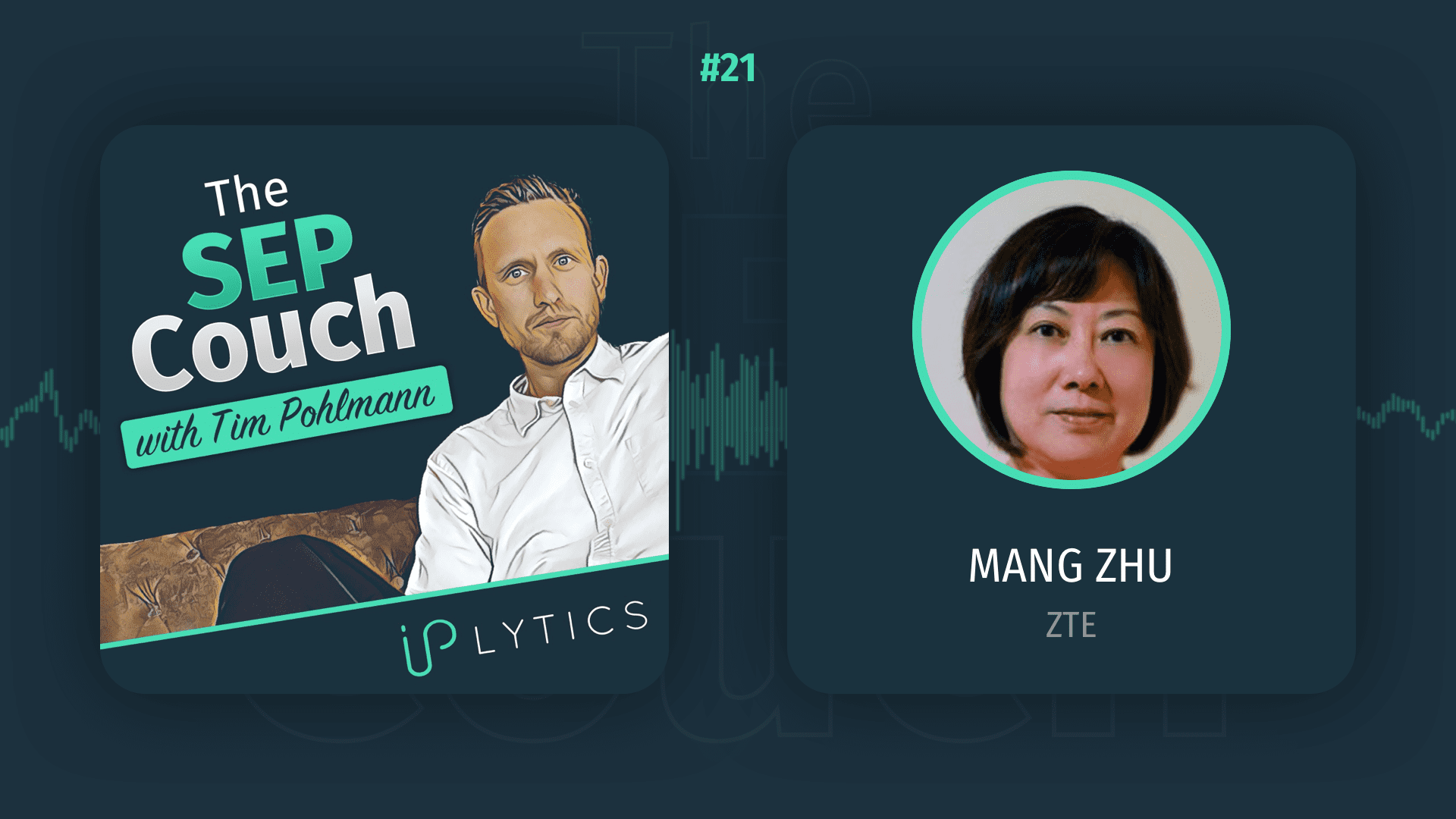SEP Portfolio Management – Episode 21

Watch on YouTube
Guest:
- Mang Zhu, ZTE
Mang holds a PH. D in Electrical and Electronic Engineering and worked on different cellular standards when she started her career at Motorola in 1994. Already in 2003 after joining the IP team, she began to establish a process that ensured the tracking of standardization activities during the patent prosecution process. Mang’s methodology was optimized at Motorola during the LTE development period and well supported all of Motorola’s SEP licensing activities thereafter. Mang also supported the technical negotiations during Motorola SEP licensing negotiations. Here especially during the 2008 and 2012 programs Mang gained a lot of experience to well understand the patent quality requirements needed for successfully licensing essential and valid SEPs.
In 2017 Mang took a position at ZTE to lead the standards essential patent (SEP) team focusing on 5G SEP development in the IP department. Because of her experience Mang also started to support ZTE’s licensing teams quickly after she joined and since the beginning of 2022 took over the responsibility for ZTE’s whole patent portfolio including SEPs and non SEPs as the head of the patent asset management team.
In the podcast Mang stresses that research for new advanced technologies starts years before any standardization activities begin: “While we yet do not know what the 6G standard will bring exactly, I am sure many of our long-term research projects will contribute to the next standard generation.” ZTE employs several hundreds of cellular standard researchers as well as close to one hundred standard delegates who go to the standards meetings, present new technologies and submit technical contributions. ZTE’s SEP team makes sure that the research teams provide timely invention disclosures. The patent team then coordinates with outside counsel to have the identified inventions filed at international patent offices as quickly as possible to establish the priority dates.
Mang’s team is using a variety of IP data tools ensuring they have the latest standards contribution data, patent declarations data and legal status information at hand. E.g. searching prior art in a fully indexed standards contribution database ensures much higher quality result. Also, understanding what other market players file as well as what they declare or include in patent pools is very important as well as understanding competitors’ participation activities and level of contribution during standardization processes.
Mang stresses: “SEP portfolio management is not about the life cycle of one patent”. In her patent portfolio life cycle management approach, her team tags patents as to essentiality, validity and perceived value. This not only allows her to right size ZTE’s SEP portfolio but also support decision making for in- and out-licensing activities.
Mang is not worried too much about the sharply increasing numbers of companies and submitted contributions at standards meetings. 5G is a much more advance technology compared to 4G. While an increasing number of standards contributing companies may create complexity Mang also feels more input from many innovators also ensures more optimized standard features. Also, the increased number of patent declaration or over declaration is a natural consequence of the ETSI IPR rules where any potentially standard relevant patent must be disclosed. This increases transparency and one can always evaluate single portfolios during licensing negotiations to identify what is essential and what is not.
